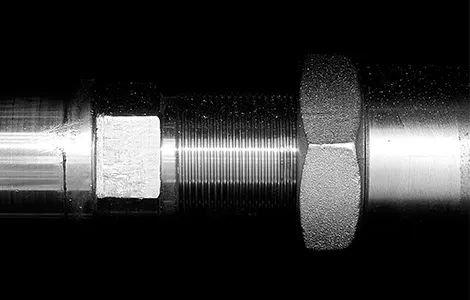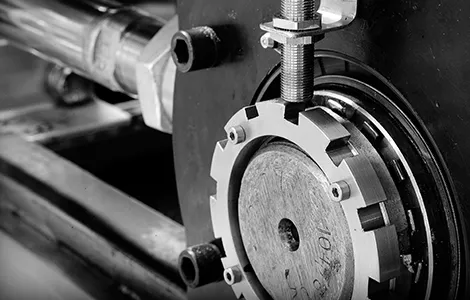Eco-Friendly Pelletising: How Steel Belt Systems Reduce Waste in the Chemical Industry
June 25, 2025
No longer do we live in a world where environmental sustainability is just a buzzword—it's now a mandate. Manufacturers are under mounting pressure to reduce waste, improve energy use, and demonstrate environmental responsibility without sacrificing production performance.
Pelletising, particularly in chemical applications like waxes, resins, and fertilisers, has historically produced significant waste through inefficient cooling, product sticking, or inconsistent pellet size. That’s where steel belt systems changed the game.
By combining process control with precision engineering, steel belt pastillation offers a cleaner, greener solution, reducing waste at every step.
Tackling Waste in Traditional Pelletising Processes
Conventional pelletising often relies on rotary drums or fluid beds, which can be difficult to calibrate for uniform droplet formation and solidification. These systems frequently result in:
- Irregular pellet size
- Product clumping or sticking
- Excessive product loss during handling
- Frequent cleaning requirements
All of these contribute to increased raw material waste, unnecessary energy usage, and reduced product yield. In some cases, the waste output can even compromise downstream processes or packaging.
Precision Pastillation with Steel Belts
Steel belt pastillation addresses these inefficiencies directly. The process involves depositing droplets of molten chemical products onto a continuously moving steel belt, where controlled cooling transforms them into uniform, solid pellets.
Key benefits include:
- Accurate pellet formation through precision droplet placement
- Excellent product release due to smooth belt surfaces
- Consistent cooling for homogeneous results
- Minimised product degradation or breakage
With steel belts, manufacturers gain better control over yield, reduce waste from off-spec production, and limit environmental runoff associated with chemical residue.
Minimising Cleaning Waste and System Downtime
Another often overlooked advantage is cleanliness. Steel belts are inherently hygienic and easy to clean, especially compared to porous materials like rubber or fabric.
Reduced product adhesion means:
- Fewer shutdowns for belt cleaning
- Lower usage of water and cleaning chemicals
- Less lost product due to washdown
This leads to fewer pollutants entering wastewater systems and supports circular manufacturing goals. For many chemical operations, this translates to thousands of kilograms of saved material annually. For more information on the power of stainless steel hygiene, explore our oven conveyors hygiene blog, discussing the challenges of hygiene in industrial processes and why stainless steel belts are the best for the job.
Material Recovery and Lifecycle Efficiency
When waste does occur, steel belt systems make recovery easier. Off-spec product can be scraped, collected, and reprocessed - minimising disposal needs.
Additionally, the belts themselves offer exceptional longevity. Unlike polymer alternatives that degrade or deform under heat and chemical exposure, steel belts maintain performance across years of use. And when they eventually reach the end of their service life, they’re 100% recyclable.
Use Cases Across the Chemical Industry
Steel belt pelletising is being widely adopted in:
- Fertiliser manufacturing, where it reduces loss during cooling and improves bulk flow
- Resin and polymer processing, with precise pellet control reducing scrap
- Wax and asphalt applications, where temperature-sensitive materials require even, controlled cooling
These sectors report not only reduced environmental impact but also operational gains in product consistency and packaging efficiency.
A Greener Future for Chemical Processing
Steel belt pastillation systems represent a meaningful step toward waste-conscious chemical manufacturing. By cutting raw material loss, reducing cleaning waste, and enabling recycling, they directly support the industry’s push for lower emissions and higher process responsibility.
PACE partners with chemical producers across Europe to supply customised steel belt solutions that meet demanding environmental and production standards.
Ready to reduce your plant’s environmental footprint while improving process performance? Contact us today for more information.
FAQ
Can steel belts handle corrosive or heat-sensitive chemicals?
Yes. Steel belts can be made from various stainless grades or coated for chemical resistance. They also allow precise temperature control, which benefits sensitive materials like waxes or resins.
Are steel belt pelletisers suitable for continuous operation?
Absolutely. Their durability and thermal stability make them ideal for high-throughput, 24/7 operations, reducing the need for shutdowns due to fouling or misfeeds.
Do steel belts require more energy to operate?
No. In fact, they reduce friction, resulting in lower motor loads. Their smooth operation helps improve energy efficiency compared to some rubber or modular plastic belts.
What maintenance is required to keep waste levels low?
Routine inspections, belt tensioning, and occasional cleaning are usually sufficient. Preventive maintenance ensures consistent performance and minimises material loss.

